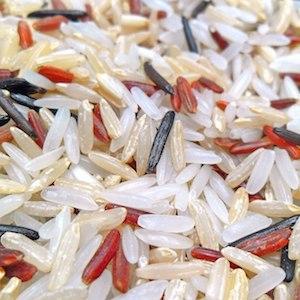A new study in Science Advances claims that more carbon dioxide in the atmosphere will cause food to become less nutritious. That very well might be true.
However, the paper concludes that the poorest people in the world will be affected the most, since many of them rely on rice to survive. Rice, which is not a particularly good source of nutrients in the first place, will become even less nutritious, putting the health of hundreds of millions of people at risk. Fortunately for the world, that conclusion is probably incorrect because it is based on two flawed assumptions.
Flawed Assumption #1: Rice Is the Main Nutrient Source for Poor People
Rice is a staple food for billions of people. But "staple" food does not mean "nutritious" food. People eat rice primarily for the calories, not its nutritional content. In general, rice is a good source of carbohydrates but little else.
Yet, Figure 1 in the study focuses on protein levels, which dropped in several different rice varieties (on average, by 10%). If a cup of rice has, say, 4 grams of protein, then rice grown in a higher CO2 concentration would have 3.6 grams of protein. Is that a big deal? It depends on how reliant a person is on rice as a protein source. A serving of fish may have around 20 to 40 grams of protein, which is 5 to 10 times higher than a serving of rice.
And poor people often do have access to fish. "Kor kou" is a fish soup that is popular among peasants in Cambodia, for instance. Fish plays a role in diets throughout Southeast Asia.
The same logic applies to some of the other nutrients the authors analyzed. They show that rice grown in higher CO2 has less iron and zinc, but rice isn't a good source of either micronutrient. In fact, researchers are trying to develop varieties of rice (some genetically engineered) that have enhanced iron and zinc levels, precisely because iron and zinc deficiency are already extremely prevalent in poor countries.
Flawed Assumption #2: Diets Won't Change in 80 Years
The authors based their study on CO2 concentrations that they believe will be likely by the end of the century. The end of the century, however, is quite far away. We hope that countries like Bangladesh, Myanmar, and Thailand are far richer in the future than they are now. Even if global warming was halted today, malnutrition would still exist. Why? Because the real cause of malnutrition is poverty, which means the only cure is wealth.
Is it possible for these countries to be wealthier in 80 years? Absolutely. China and South Korea have shown -- albeit using drastically different economic systems -- that a wealthier society may only be a generation or two away. In real terms, China's economy grew 2,687% from 1980 to 2016*. As a result, literally hundreds of millions of people were pulled out of poverty into the middle class.
There are plenty of reasons to be concerned about increasing levels of CO2 in the atmosphere. The nutritional content of rice isn't one of them.
*Note: Price-adjusted to constant U.S. dollars in the year 2000.




